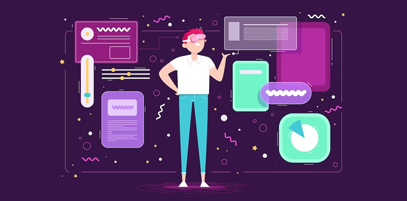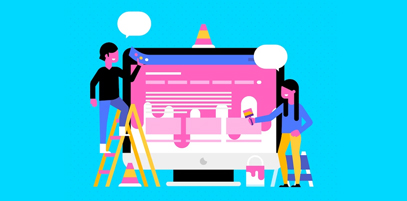Understanding the Application of Neuroscience in UX
By :- Tiana K

The connectivity between neuroscience and UX (User Experience) is not a new concept. After all, we've been trying to tap into human emotions with web designs since the origin of the web. However, the concept has become even more important than ever before, thanks to advancing technology and growing competition.
Let’s explore more about neuroscience and its role in the UX space so that you can design award-winning websites and apps.
What is Neuroscience?
Neuroscience or natural science is the study of the nervous system – what it does, how it works, and its structure. It involves the study of our brain, cognitive functions, and behaviour. The process of applying the principles of neuroscience to UX designing is called ‘neurodesign’.
As we know, understanding the customer journey is a critical part of the UX designing process. Neurodesign helps observe the customer journey, enabling you to determine what's going on for the audience at the cognitive level. So, this approach lets designers look at the brain triggers that lead to positive customer experience. They can make informed design decisions according to human trends, customer behaviour, and overall customer or company interactions.
Put simply, by understanding how our brain processes information and makes decisions, you can design user-friendly websites and apps that improve digital user experiences.
Real-World Examples of Neuroscience’s Application in UX Design
Starbucks: The Starbucks mobile app does well for appealing to multiple senses of its users. Using the app, users can pay for their orders via phone scan using a prepaid account. So, by understanding how users use technology, the coffeehouse created an application that triggers connections with our human brains.
Amazon: Our brains are programmed to want to fit in. So, by offering product reviews, Amazon fulfils our social needs by understanding our connectedness with other shoppers. The more reviews a product gets, the better – even if the reviews are bad.
How can Designers use Neuroscience to Improve their Designs?

In the world of designing, human brains boast a remarkable ability to perceive and discern patterns from the external world. This behaviour enables people to engage quickly with various elements. Over the years, many theories have emerged, focusing on how humans perceive and recognize these elements.
One seminal study by David Hubel and Torsten Wiesel reveals that specific cells in the visual cortex exclusively respond to horizontal lines, while others react solely to vertical lines. In addition, certain brain cells are attuned to edges, while others specialize in perceiving specific angles. This research provided valuable insights into the ability of pattern recognition within the human brain.
Another theory suggests that the human brain has a large memory bank that stores countless things. When encountering an object, the brain diligently compares it against every item stored in the memory bank until the correct shape is recognized.
Conclusion
By applying the neuroscience of user experience (UX), designers can leverage the power of pattern recognition to optimize their creations. Understanding how the human brain processes and responds to visual stimuli enables designers to craft more impactful and engaging experiences for their intended audience.
Recent Topics
-
 WordPress.com Launches 100-Year Web Hosting Plan
WordPress.com Launches 100-Year Web Hosting PlanWordPress, the platform that helps people create websites, now offers something rare. It has taken a bold leap into the future with its 100-year web hosting plan. Yo...
Read MoreBy :- Laura Davidson
-
 5 Best AI Web Design Tools You Can Try
5 Best AI Web Design Tools You Can TryWhy bother with all the effort of creating websites manually when we have amazing AI tools? In fact, using these tools has become one of the most-practiced ...
Read MoreBy :- Tiana K
-
 Role of Animation and Micro-Interactions in User Experience
Role of Animation and Micro-Interactions in User ExperienceIn today's world, almost every brand wants to create a user-friendly interface for its customers. The main aim behind this is to increase customer base and revenue. Now, when it comes...
Read MoreBy :- Laura Davidson
-
 Web Design Trends to Watch Out for in 2024
Web Design Trends to Watch Out for in 2024Web design is a constant-evolving technology landscape. As a web designer, staying tuned with web design trends and keeping your designs up-to-date is important. These trends will affect ...
Read MoreBy :- Esther McGuinness
-
 The Power of Storytelling in Web Design Engaging Users with a Narrative
The Power of Storytelling in Web Design Engaging Users with a NarrativeStories never fail to engage listeners. That’s why web designers are leveraging the art of storytelling in their designs. In web designing, storytelling goes beyond merely usin...
Read MoreBy :- Navkiran Dhaliwal
-
 WordPress Releases Version 6.3 ?“Lionel”
WordPress Releases Version 6.3 ?“Lionel”WordPress 6.3 “Lionel” is out! Now, you’ll be able to create more beautiful and compelling websi...
Read MoreBy :- Tiana K
